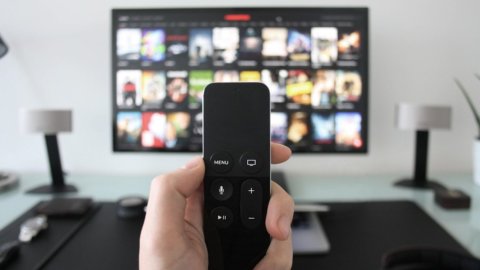The news was long overdue. Since 16 December last year, Auditel has taken over, with a standard shared and certified by all the subjects operating on the television market, TV ratings on all digital devices: pc, smartphone, connected tv and tablet. For reasons that are not fully understood, these data were delayed in being published until, inevitably, they could no longer be kept in the drawer. With the Total Audience the picture that emerges, after the first official week of surveys, is of great interest and begins to outline the new weights and roles that the various competitors in the television market may have.
Su FIRST online We have written it for some time: digital terrestrial television, both for technological reasons (different use of frequencies) and for reasons related to the social and consumption typologies of viewers, is destined to succumb to the blows of technological innovation. The key is very simple: linear television (everything that is broadcast from the broadcaster to the viewer) and non-linear (everything the viewer decides to see where, how and when he wants). As he said Andrea Imperiali, president of Auditel, "in Italian homes, the 41 million televisions are now joined by as many as 60 million devices connected to the network, through which TV content is enjoyed both live and on demand".
The greater number of devices does not necessarily mean a greater quantity of listens and, even less, it is capable of qualify the type of connected users (interesting data, at least from the point of view of costs/contacts useful for the advertising market). In the coming months, as far as we know, it is also expected the more detailed "profiling" of the public through a merger of the census data with that of the traditional panel. However, all of this certainly leads to the detection of a by now consolidated trend: especially among young audiences, "consumption", ie the time spent in front of a television screen, is changing rapidly and traditional broadcasters are struggling to keep up.
We come to the official data released on Tuesday and read for what they may mean in broad terms. The two main traditional broadcasters, Rai and Mediaset, are below many points with regard to the stream by publisher (specifying that it is LS - Legitimize Stream - or the time or volume of content for a given period of time). As far as the connected channel is concerned, again with LS, Mediaset's Canale 5 beats the competition 8 to 1.
How to read this first summary information? First of all, it is an instrument that needs a more punctual "running in" both in terms of timing and in the characteristics of the surveys. Streaming data flow says a lot but it doesn't say everything and the "profiling" theme of users still remains central because only on the basis of certain criteria is it possible to package products with the characteristics most appreciated by viewers (which can then be sold to advertisers). It is, in a sense, the analogous criterion that determines the success of eg Netflix which thanks to the algorithms and data it has (and is the sole owner) is able to "package" a product in progress, as soon as it is able to detect the approval of the product in circulation.
The axis of reference therefore moves from the content of the product, which nonetheless remains at the center of the production process, to the distribution platform where, in fact, the expected trend is confirmed: from digital terrestrial television to connected streaming television. Attention: among the reference platforms there is also the satellite which also has a significant reference market: the data released yesterday report Sky Sports leads the stream by publisher (thanks to football) and seven of the top ten most watched channels (always sports).
Who could win and who could lose in the near future? We quote Agatha Christie “A coincidence is a coincidence, two coincidences make a clue, three coincidences make a proof.” The way these initial data are emerging and the desire to simplify to a minimum for Rai first of all and in part for Mediaset (which instead seems to have already taken remedial action by parceling out many products) gloomy times are foreseen. In Viale Mazzini, which we consulted, no official comment: although an "explanatory" meeting was convened in great secrecy, no one wanted to comment: "saying that the Public Service cannot handle technological competition is not very pleasing" he told us one of our interlocutor, while another, more confident, said "Now it is necessary to push on the Industrial Plan".




